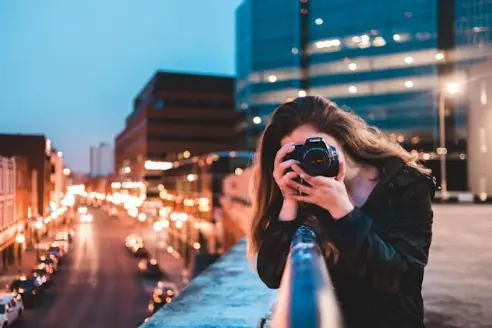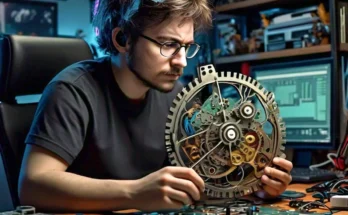AI in photography enhances creativity and productivity. It is a crucial technology for idea generation and innovation. Combined with machine learning, AI has changed photography in many ways. Photographers use it to take photo editing to an entirely new level. AI has helped gadget manufacturers create complex and smart cameras.
There are concerns that AI in photography will take over traditional artists’ jobs. People celebrate the new opportunities for efficiency and innovation brought by AI. However, they also wonder whether it will drive away the future of human creativity and art. As people embrace the benefits, they must also address these concerns.
Creativity beyond measure in AI-assisted photo editing
After AI was launched, developers began to create many photography tools. Photographers can use editing, marketing, workflow, and post-production tools today. Many of these tools use advanced features for automated editing. AI makes cropping, background removal, and element addition easier and possible.
There are hundreds of top AI photo editor tools in the market today. The many options make it harder for photographers to choose AI software for photo editing. Tools like Canva, Aftershoot, and Lensa are great for editing. They have features that help artists edit pictures in seconds. Programs like Lightroom and Photoshop use AI to adjust colors, shadows, and lighting. Sensei uses AI to suggest the best editing to do. Skylum and Luminar editors create amazing photos with no effort. Photographers today spend the least time refining photos. They have more time to be creative and improve their work.
AI-powered tools save them many hours of creativity. They don’t have to worry about technical details. They can spend more time thinking about artistic ideas. If they need an image replaced, photographers use AI image replacement. This level of creativity is unprecedented thanks to AI. It benefits photography in many ways.
- Automated image enhancement to improve quality
- Precise removal or addition of elements
- Automatic identification and labeling of objects
- Automated sorting and photo organization
- Quick backups and handling repetitive work
Going beyond the artistic boundaries
Photographers should not view AI in terms of photo enhancement only. They should view it in terms of opportunities to create new forms of art. An example is the AI-driven Generative Adversarial Networks (GANs) today. Many programs work similarly to the GANs. These image creators use AI to create entirely new images.
Photographers can use these networks to generate ideas from scratch. All that they need is the program and creative ideas. AI keeps refining the generated images to create abstract art and realistic images. This is an entirely new and unexplored medium for photographers.
Another example is Style Transfer. This technique blends multiple artistic presentations to produce uniquely attractive art. This technique is useful for creating imitations and different aesthetics. Photographers can use it to create hybrid art which was an impossibility in the past.
Image credit:Unsplash
AI replacement? Dealing with the fear
Photographers agree that AI is doing amazing things in their field. They agree there is so much to discover and innovate. Yet, many worry AI is replacing their jobs quickly. Their fears are not baseless. Looking at reality, AI does things better without requiring human assistance.
An example is the automated editing, shooting, and drone-driven photo technology. The end product of AI is much better than all human effort. Anyone in the photography field has a reason to worry about their future.
People can use AI today to generate photos from nothing. For example, the Edmond de Bellamy Portrait was AI-generated, yet it sold for $432,500. Amid all these, is there hope for the future of photography? Experts argue this way.
Retaining the human touch
Pictures speak thousands of words depending on the shooting techniques used. People want to see and feel emotions in pictures. Although it is advanced, AI cannot replace human touch. AI may not capture the moment, or add emotions, or perspectives.
This is an area where human photographers will always excel. AI entirely relies on human creativity and training. Technology may copy human behavior and character. However, it can never replace it. AI will help photographers discover new artistic ideas but will never replace them.
Humans collaborating with AI
Instead of a replacement, photographers will collaborate more with AI. Instead of competing, humans will allow AI to do repetitive and complex tasks. For example, AI can help remove and add elements in pictures.
It can help replicate photos or refine their beauty. Photographers will focus more on creating new concepts and adding emotions to photos. A transition is already happening in this field. Photographers need to flow with the changing trends.
To sum it up – Step into the future
AI in photography is beneficial but also worrying. This technology is helping photographers enhance creativity. They produce amazing photos using different AI tools. Regrettably, these professionals worry AI might replace them soon. Photographers should step into the future and use AI to their advantage. Collaboration with technology will drive away the competition and boost productivity.




